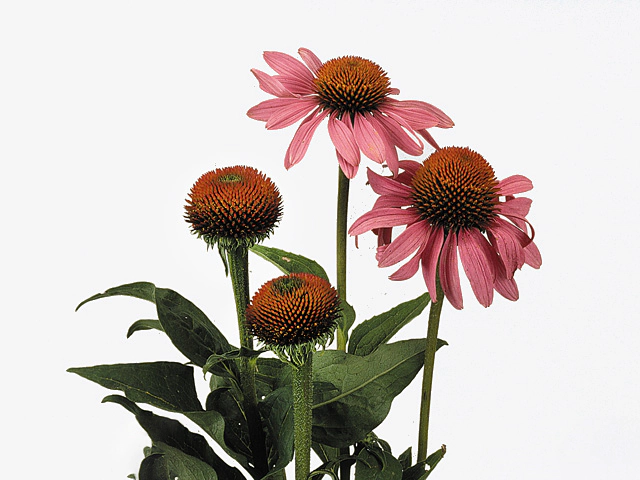Echinacea purpurea

| Flower type | Single |
| Flower scent | Unscented |
| Winter hardness | Excellent (USDA-zone 1,2,3,4) |
| Flower color | Brown-orange red-169A |
| Leaf, scent | Unscented |
| Flower diameter | 11 - 12 cm |
| Plant height | 80 - 90 cm |
| Inflorescence | Capitulum (head) |
| Flowering month(s) | July; August; September |
| Light conditions | Semi-shades; Sunny |
| Leaf division | Simple |
| Leaf colour, pattern | Unicolored |
| Flower color distribution | Unicolored |
| Flower, secondary color(s) | Pink-dark blue pink-186C |
| Toxicity (if consumed) | Not or barely |
| Moisture requirements | Dry; Normal |
Echinacea purpurea: A Hardy and Vibrant Choice for Your Garden
If you are looking for a beautiful and low-maintenance addition to your garden, look no further than Echinacea purpurea. This stunning flower, also known as Purple Coneflower, boasts a variety of attractive features that make it a popular choice among garden enthusiasts.
One of the first things to note about Echinacea purpurea is its flower type. This perennial flower produces single blooms, meaning it has a single row of petals around the center. While some gardeners prefer double flowers, the simplicity of the single blooms of Echinacea purpurea gives it a charming and natural look.
Although the flowers may lack a strong scent, they more than make up for it with their vibrant colors. Echinacea purpurea boasts brown-orange red flowers with a shade of 169A, making it a unique and eye-catching addition to any garden. The flower diameter measures between 11 and 12 cm, ensuring that their presence in your garden will not go unnoticed.
The plant itself reaches a height of 80 to 90 cm, making it a medium-sized perennial suitable for both garden beds and containers. Its inflorescence, known as a capitulum or head, adds to its visual appeal. Echinacea purpurea blooms in the late summer months of July, August, and September, providing a burst of color just when many other flowers begin to fade.
When it comes to lighting conditions, Echinacea purpurea is a versatile plant that can adapt to both semi-shade and sunny locations. This makes it a suitable choice for various areas of your garden.
The leaves of Echinacea purpurea are unscented but feature a simple division with a unicolored pattern. This simplicity adds to the plant's overall appeal, allowing its flowers to steal the show. The flower color distribution also remains unicolored, ensuring a consistent and uniform appearance.
For those concerned about the potential toxicity of the plant, rest assured that Echinacea purpurea is not or barely toxic if consumed. However, it is always advisable to exercise caution and keep pets and children away from any plant to avoid potential issues.
Moisture requirements for Echinacea purpurea are relatively low, making it a suitable choice for gardeners who do not wish to spend excessive time and effort on watering. The plant can tolerate both dry and normal moisture levels, making it an ideal choice for regions with varying precipitation.
One of the most outstanding features of Echinacea purpurea is its winter hardness. Rated excellent for USDA zones 1, 2, 3, and 4, this perennial has the ability to withstand harsh winter conditions and emerge even stronger in the following spring.
In conclusion, Echinacea purpurea is not only a visually stunning flower but also a hardy and low-maintenance addition to any garden. Whether you have a small garden bed or a larger landscape, this versatile perennial is sure to bring beauty and charm year after year. Its vibrant brown-orange red flowers, medium height, and adaptability to different lighting conditions make it a popular choice among garden enthusiasts. So, why not consider adding Echinacea purpurea to your garden and enjoy its beauty for years to come?
Market availability index by month:
| Jan. | Feb. | Mar. | Apr. | May | Jun. | Jul. | Aug. | Sep. | Oct. | Nov. | Dec. |
|---|---|---|---|---|---|---|---|---|---|---|---|
| 1 | 1 | 1 | 1 | 2 | 4 | 3 | 3 | 2 | 1 | 1 | 1 |